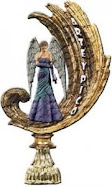I’ve been talking (and writing) about the pesticide “bans” (without quotation marks) in Toronto and other Canadian cities for months now, and just discovered that I don’t know what I’m talking about.
When I decided to visit Toronto to see my parents, I figured it would be great chance to learn more about the impact of the pesticide “ban” passed several years ago. Were people complying? Were there a lot of complaints? How did the parks look? How had the parks department adapted? Was the “ban” successful?
So I called a series of environmental organizations and city parks employees, explaining to each that I wanted to learn more about how things were going since the pesticide “ban.” The third or fourth one interrupted me: It’s not a ban, he said, which brought me to a screeching, stuttering, embarrassed halt.
When I re-read the by-law more carefully after that conversation, I saw the exception I’d missed: that pesticides are permitted “To control or destroy pests which have caused infestation to property.” Herbicides are banned outright, but insecticides are severely limited, not banned.
The city employs an Integrated Pest Management (IPM) approach, meaning that everything is done to encourage healthy plants (including grass) and that pesticides are not used routinely. However, if an infestation does occur and other methods don’t succeed in controlling it, synthetic pesticides can be used.
Many Canadian bylaws contain an exception of this sort, I’ve discovered; some even specify the number of cinch-bugs per tenth of a square meter that constitutes an infestation. Apparently property owners in Toronto must stand ready to explain any use of pesticides, so they need to count and record pest-levels.
Before I could ask any more questions, my informant told me I needed to go through the city’s Media Hotline, a clearance center for all requests to speak to City employees. The Hotline is currently processing my request; I’ll be back to you after they get back to me.

 Subscribe to RSS feed
Subscribe to RSS feed


